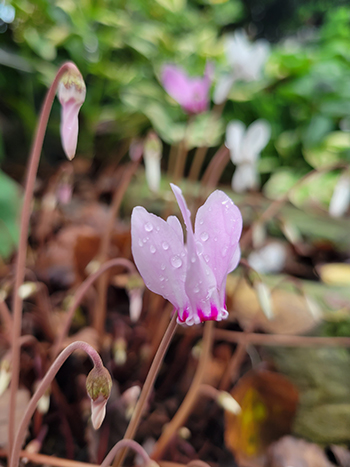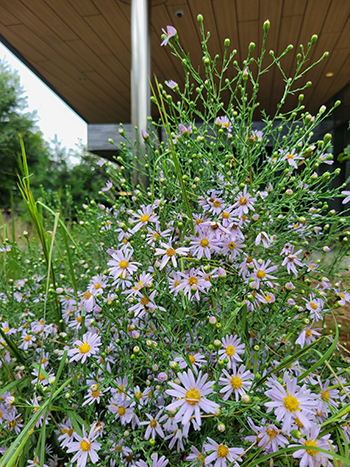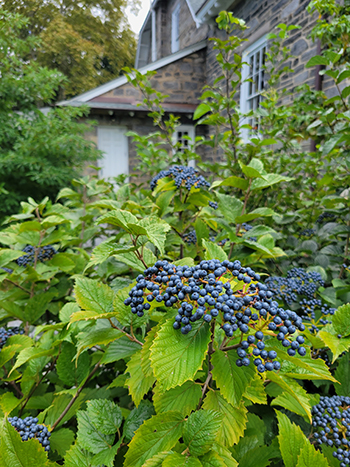
Plants of the Week: September 11
Guest Author: Wylie Lapp, 2023 -2024 Public Horticulture Intern

Cyclamen hederifolium (Persian violet):
There are many joys of gardening for me, and one of the surprising ones is actually forgetting that a plant is there. Plants that have a period of dormancy and disappear for a time can be such curious additions. There’s nothing quite like finding a patch of Cyclamen hederifolium in autumn pushing out its fairy-like flowers in shades of white and magenta, just as the ones here in the Harry Wood Garden are doing. As the flowers fade, the leaves unravel from the ground like a coiled spring revealing dark green and silver hued foliage that persist through the winter. Eventually in late spring as the air warms they once again go into their summer slumber, waiting to be forgotten about until being rediscovered in fall. Photo credit: W. Lapp

Symphyotrichum laeve (smooth aster):
For those of us that love asters there always seems to be a favorite species that captivates, and for me it has to be the smooth aster. Similar to other members of the genus, Symphyotrichum laeve, has pale lilac colored ray florets surrounding soft yellow disk florets that just seem to radiate cheer. Like its namesake the leaves of S. laeve are smooth and have a glaucous appearance which separates them from other asters, and is a favorite feature of mine. Smooth aster also has a very sturdy habit, seeming to flop far less than other species. Find these throughout the Singer Hall landscape. Photo credit: W. Lapp

Viburnum dentatum (arrowwood viburnum):
Arrowwood viburnum is one of those plants that just keeps on giving. A native to the eastern United States, Viburnum dentatum is a deciduous multi-stemmed shrub that delights from spring through fall. In late spring, we are graced with corymbs of white flowers that cover the plant from top to bottom. As the blooms fade we are left with small berry-like drupes (think stone fruit) that slowly mature until they reach an inky blue color. When not in flower or fruit, V. dentatum still has its glossy green serrated leaves that add lushness throughout the summer until they turn a deep red in fall. Find this lovely fall fruits in the Singer Hall landscape. Photo credit: W. Lapp





No Comments